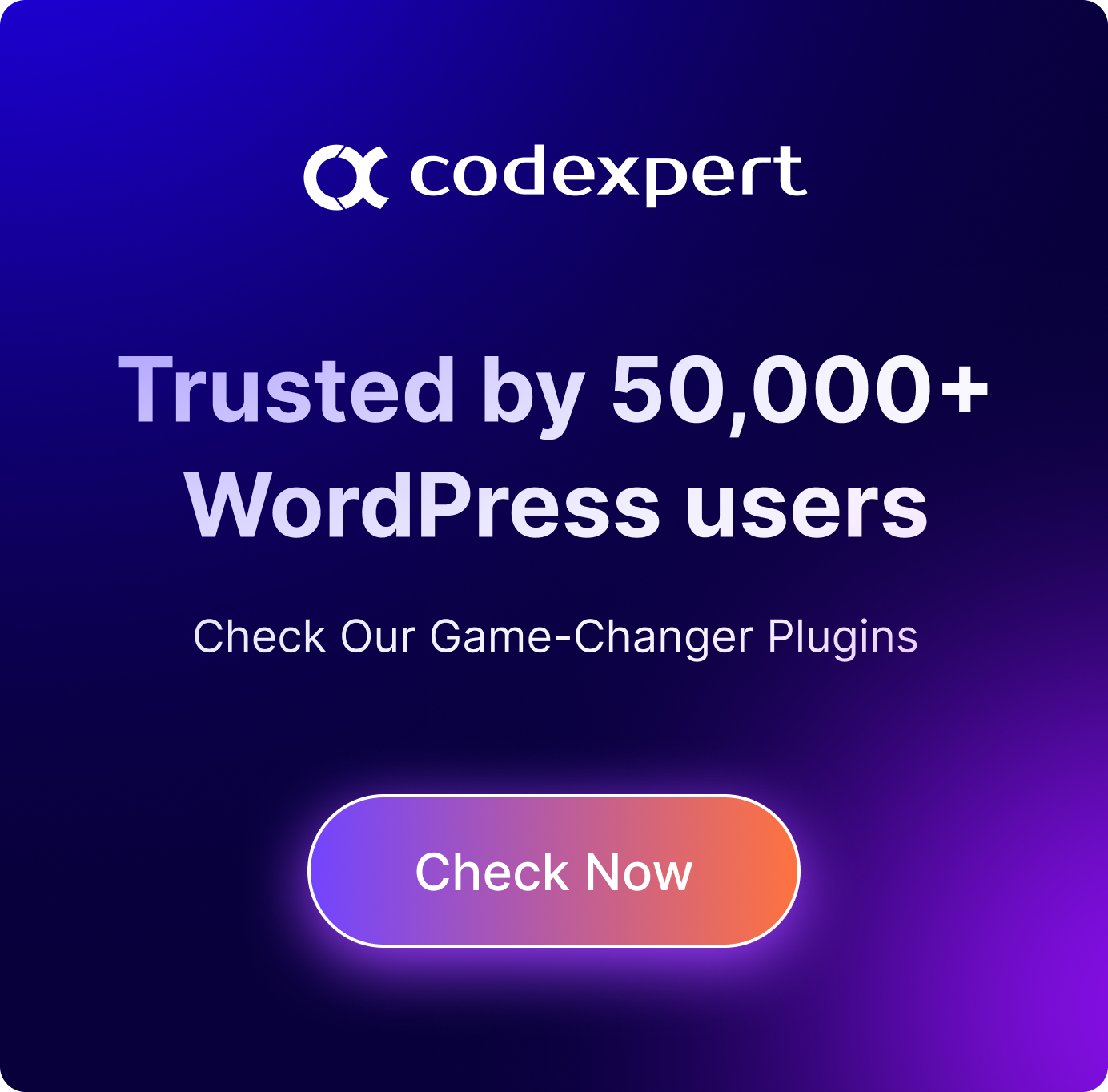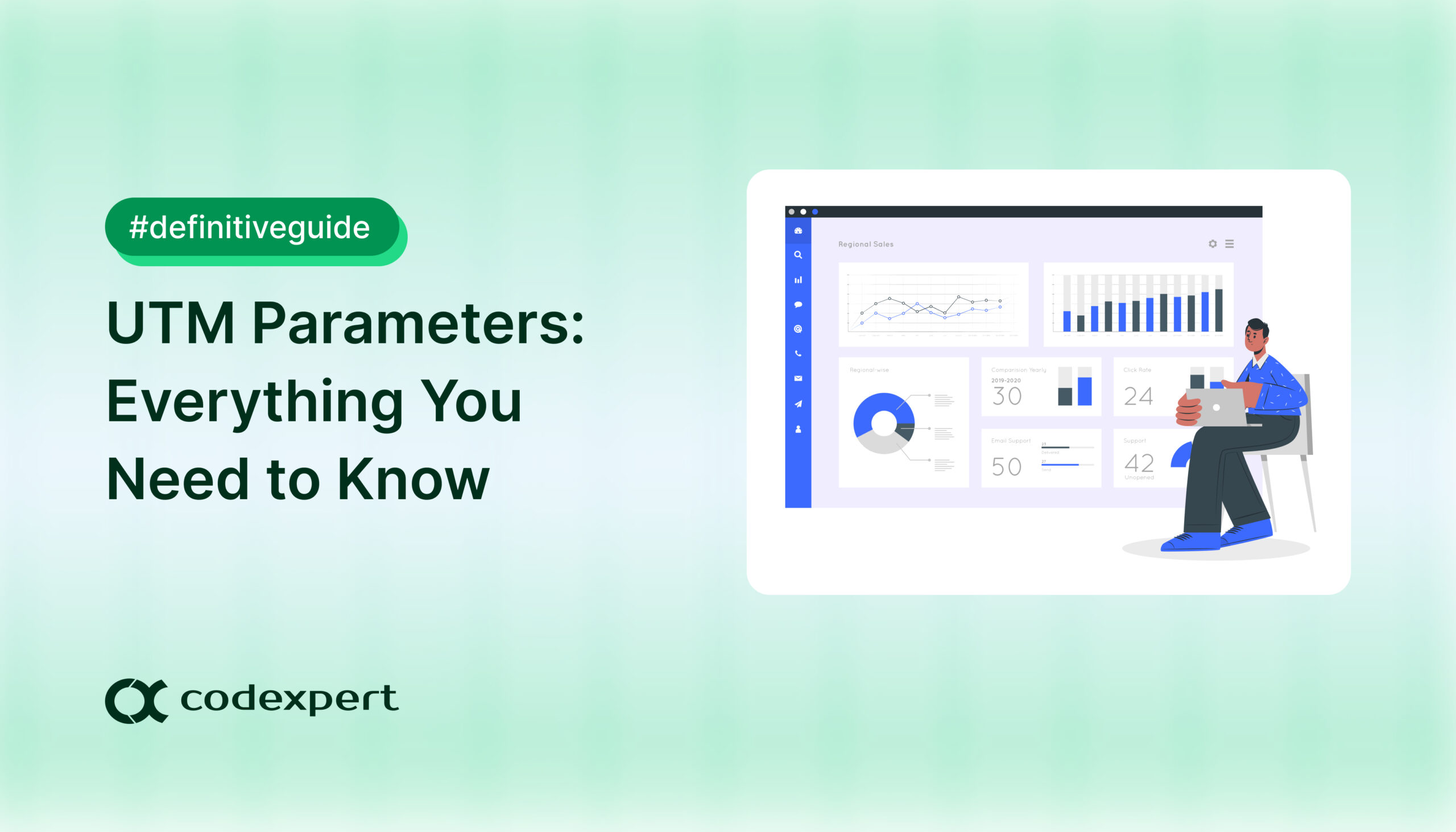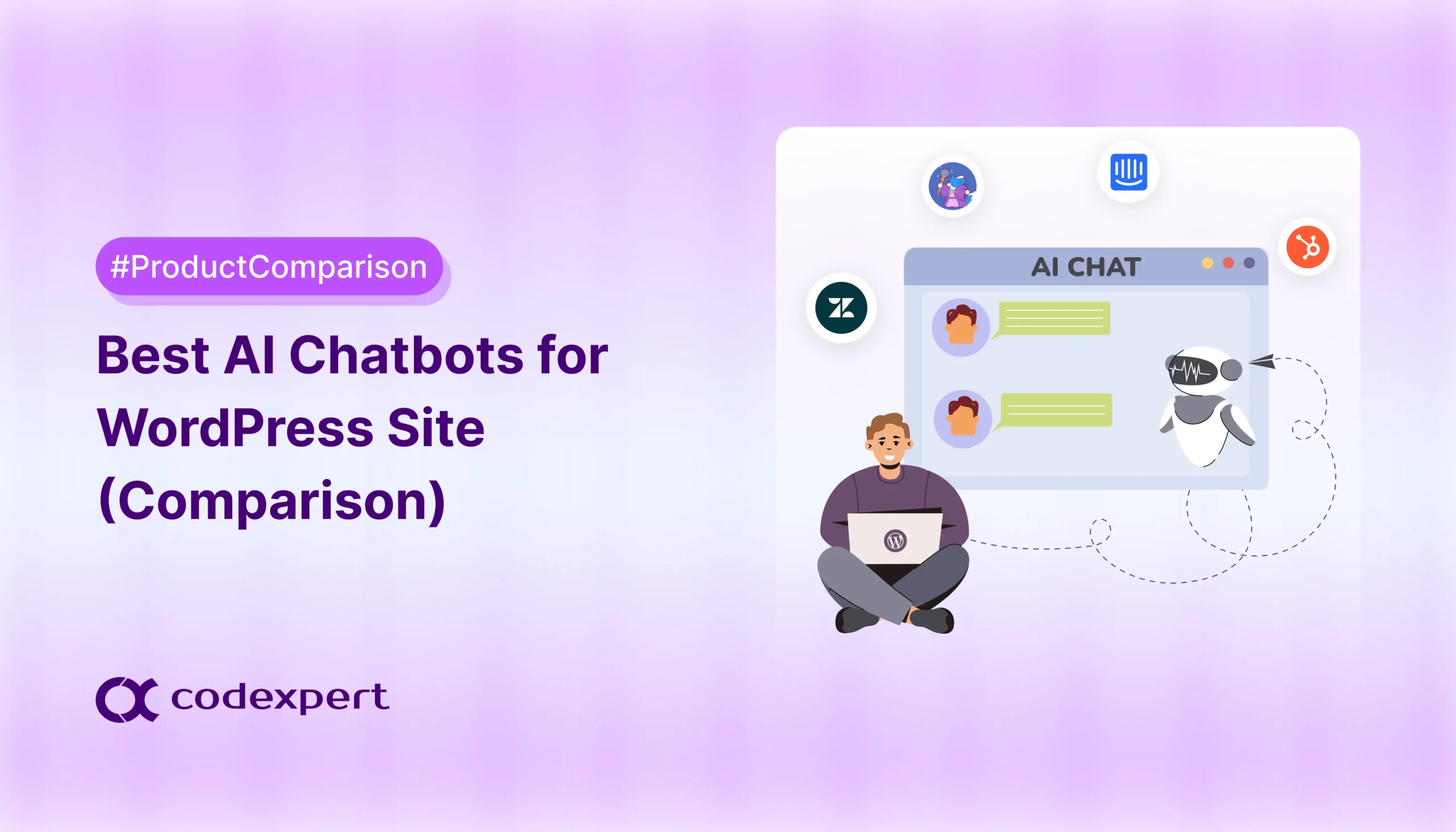Ecommerce Marketing Funnel – A Complete Guide (2025)
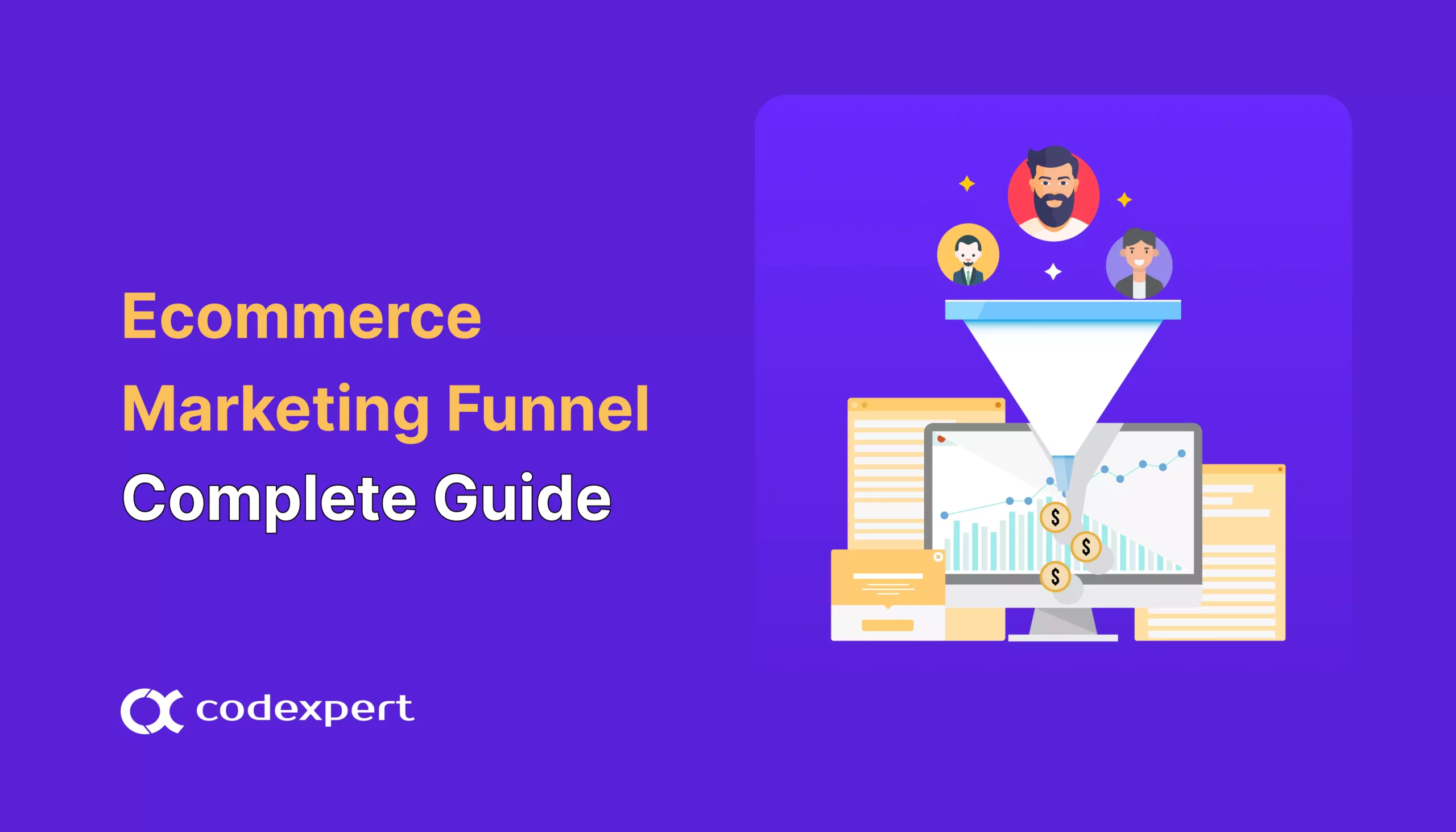
Understanding the marketing funnel is the key strategy for every marketer to generate consistent sales. Without a clear funnel, it becomes complex for them to manage customers and share the right messages as they navigate your website.
In this guide, we’ll explore every possible marketing funnel stage, how to create a funnel for your ecommerce, and discuss the metrics that matter most. Let’s get started!
What Is an Ecommerce Marketing Funnel?
An ecommerce marketing funnel is a visual presentation of your audience journey. It breaks down the process into stages, helping marketers understand and optimize how potential customers move toward becoming paying customers.
Why You Should Create A Marketing Funnel for Your Ecommerce Store
A marketing funnel can help you deliver the right message to your customers at the right time. It will also help you understand where your leads usually drop off.
More importantly, if you want to improve your ecommerce sales, an ecommerce marketing funnel can help turn leads into buyers. A structured marketing funnel will also provide you with insights into customer behavior.
A marketing funnel for your ecommmerce can help you allocate resources effectively to fine-tune campaigns for a better ROI. Here’s why having a marketing funnel is essential:
- Guides customers through the buying journey.
- Improves ecommerce conversion rates for your ecomerce store.
- Optimizes your marketing efforts to reach the right audience.
- Makes data-driven decisions easy to refine strategies.
- Creates a predictable revenue stream for your business.
3 Popular Marketing Funnels & Their Stages for Ecommerce
There is no particular number of marketing funnels for an ecommerce website. And it can vary from industry and audience. Marketers create funnels based on their customer group. Let’s get into the Marketing funnels.
1. Basic Marketing Funnel
The basic marketing funnel has three stages, Top of the Funnel, Middle of the Funnel, and Bottom of the Funnel.
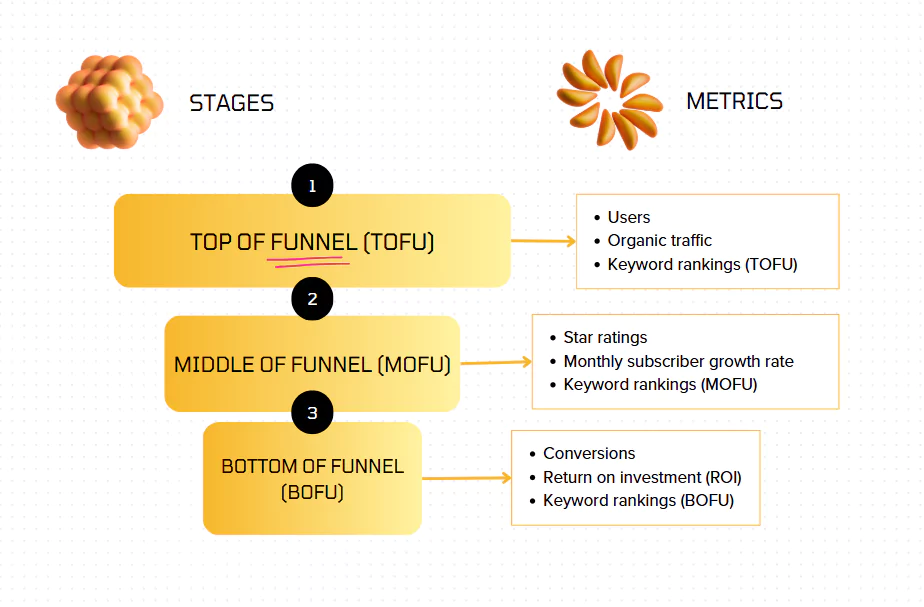
This funnel will describe the audience stages. Like those who are new to your website, casual, and ready for purchase. Here is an example of the Basic Marketing Funnel in action. Suppose, you are selling air tickets on a website. You will find three types of people there:
- At stage one (TOFU), they visit your website from any references. They are checking out your brand and could potentially become your fans. If I say precisely in marketing terms, they are discovering your brands.
- At stage two (MOFU), visitors try to get into the deep and engage with the insights.
- At stage three (BOFU), they agreed with the solution you provided and ready to purchase the ticket.
2. AIDA Marketing Funnel
The most used funnels for ecommerce marketing. In this context, AIDA stands for Attention, Interest Desire, and Action. In this ecommerce marketing funnel stage, here is the customer journey segment:

- Attention: In this stage, people may come to your website through Google searches, word-of-mouth, or from social media. You need to grab their attention and create a good impression.
- Interest: If they are a potential customer they will show interest in your offer by subscribing to your email list for a coupon or any offer that attracts them. You need to provide your potential customers with more helpful content so they can learn more about your offer.
- Desire: In here, customers show the desire to purchase from your store. Your goal is to create a deep connection and show them your product’s value.
- Action: At this stage, customers take their desired action. You have to make this process easier for them by making the decision process more simple.
3. Granular Marketing Funnel
As a marketer, you can give even more breakdowns in your ecommerce marketing funnel than the AIDA model. Here are the details of each Granular Funnel at each stage –
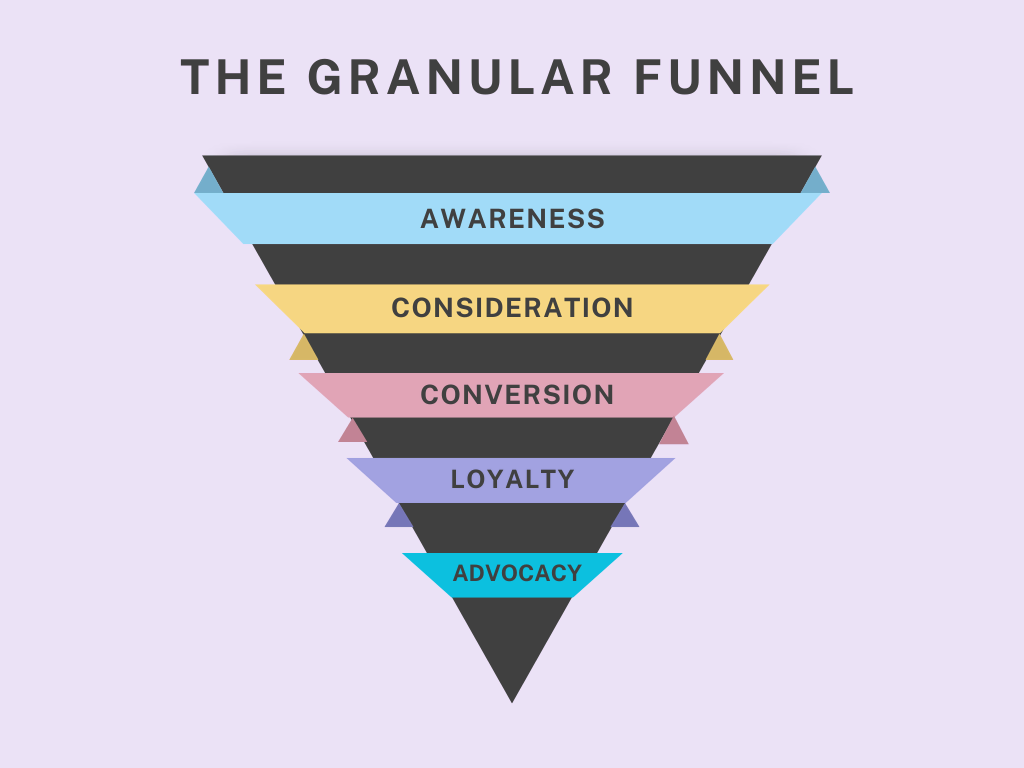
- Awareness: At the Awareness stage, businesses use channels like content marketing, social media, influencer outreach, and SEO to attract new visitors to their store. Using dedicated ecommerce SEO tools can make this process faster and more data-driven.
- Consideration: At this stage, people are comparing your products or services with your competitors. You must provide information that encourages them to choose your brand.
- Conversion: In conversion stage, customers are taking their actions. So, your goal should be making the process smooth.
- Loyalty: Build a strong bond with your customers which will encourage your customers to buy again.
- Advocacy: Your goal at this stage is to turn your loyal customers into your influencers or brand ambassadors.
How to Create a Funnel For Your Ecommerce
To drive more sales for your ecommerce site follow the below steps for creating a marketing funnel for your ecommerce-
Step 1: Research Your Target Audience
Through proper research, you can get more insights into your audience and understand their needs at each stage to improve to the next.
When you are researching your audience you need to find-
- Demographics of your audience (age, location, etc.)
- Their pain points and challenges
- Goals and desires
- Where do they hang out (social platforms, forums, etc.)
- Their purchase decisions and triggers
- Their way of finding new products
- Information that makes them purchase
To find these details, you can use the audience research tools of Semrush. The sequence-
1. First, log into Semrush and go to Trends >> One2Target, set your location, website link and click on the Analyze button.
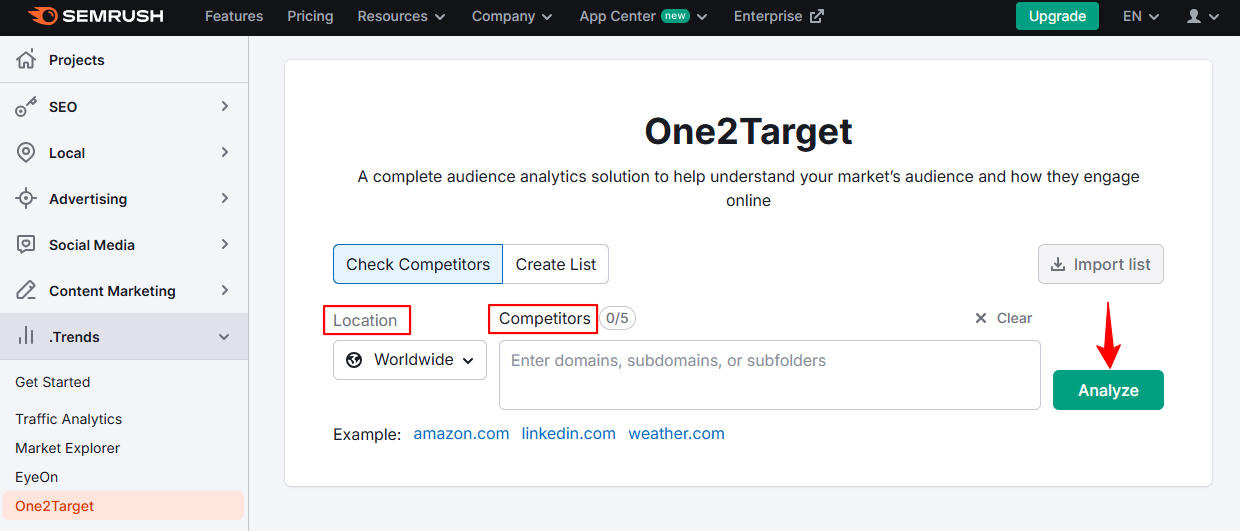
2. After your search, click on each tab (Demographics, Socioeconomics, Behavior, Audience Overlap) to get more information about your audience.
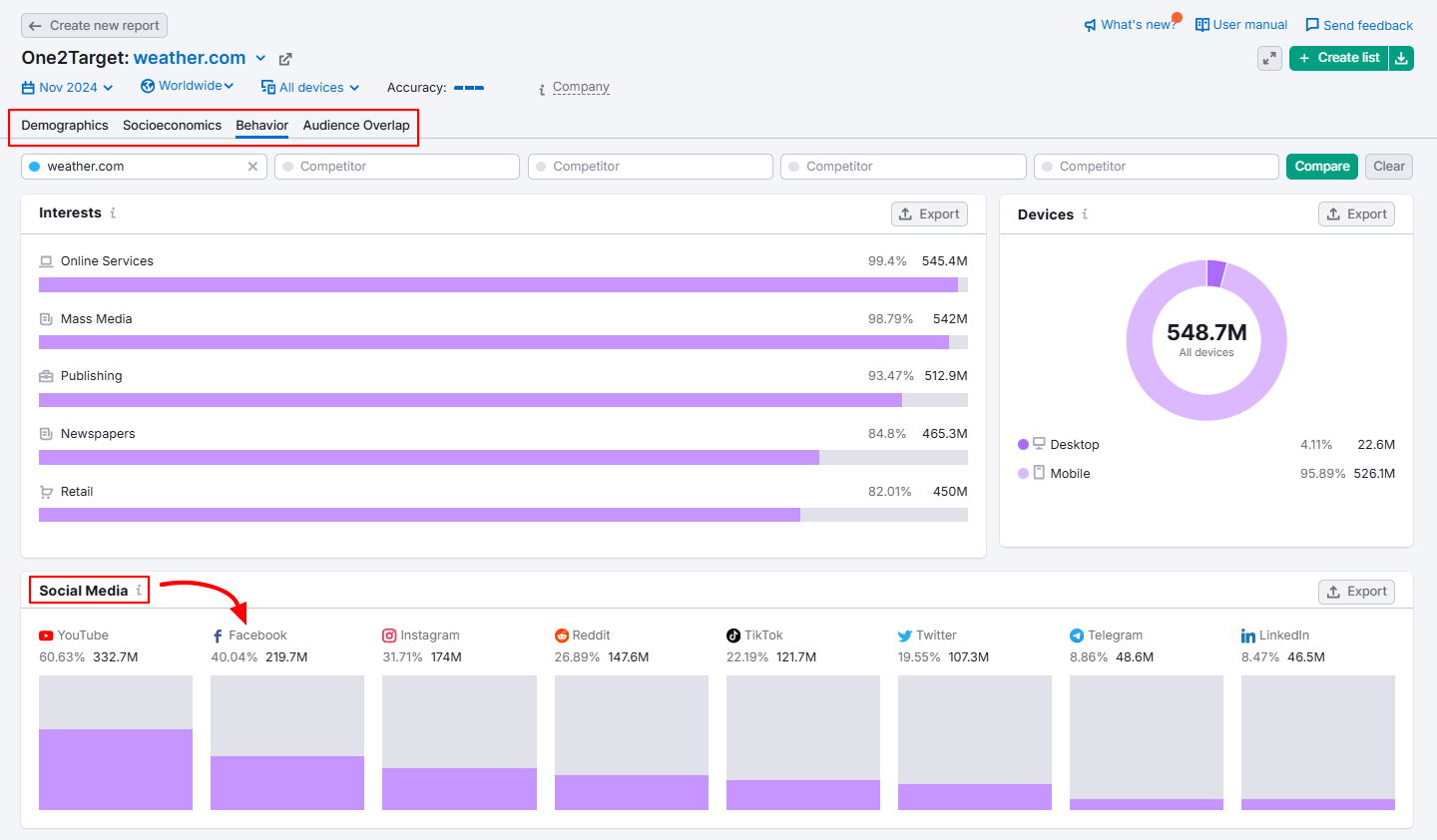
3. There is another way to dive deeper into customers’ behavior. Search for Hotjar from your browser and log into your Hotjar account. After that, go to Surveys and click on New Survey from your right.
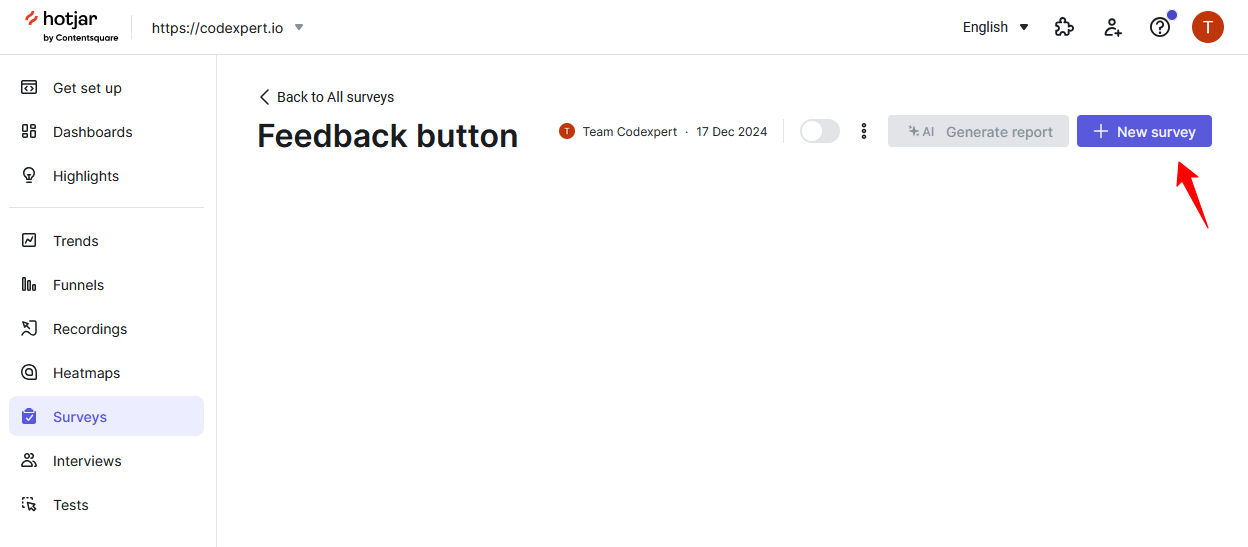
4. You’ll directed to a new page where you have to provide information for your survey form. When you are done click on the Create Survey button.

5. To read the response from your site visitor click on the View responses button.
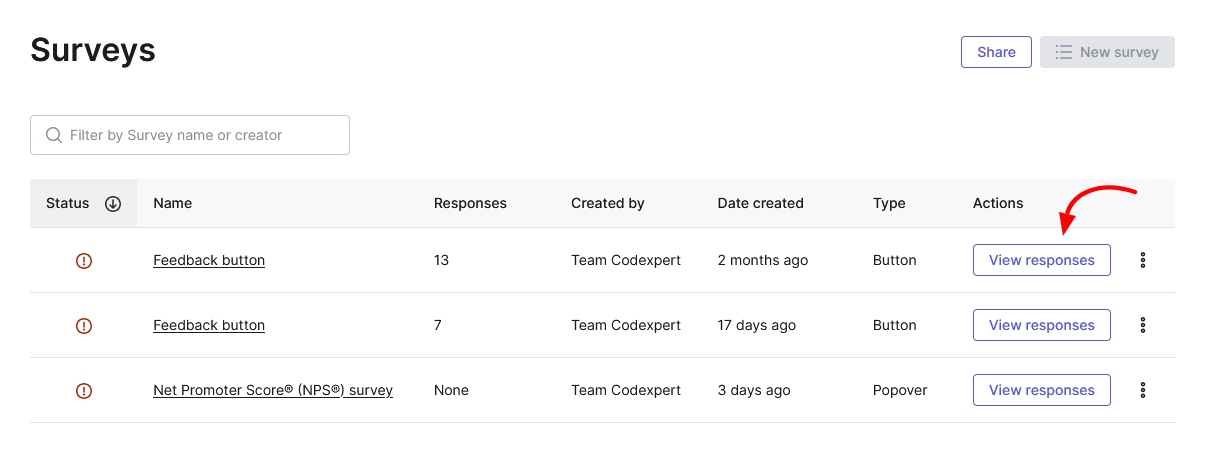
P.S. Make sure you have installed the tracking code to start getting survey results to your email inbox.
Step 2: Develop Each Funnel Stage
Now are the steps to develop your funnel. In these steps, you have to figure out which information and content is required to make your audience move to the next step. Suppose you sell clothing in an online store. Based on earlier research, you already understand that:
- Use visually appealing content to drive attention. For example, you can use high-quality visuals of your clothing.
- In the interest stage, you have to provide content that helps the audience to understand your product deeply. For example, create blog posts or newsletters that how your brand’s clothing is better than other fashion.
- During the consideration stage, your audience seeks to gain more information about your clothing. You can add videos or testimonials that indicate your clothing’s quality.
- In the intention stage, the audience often abandons their carts. You can create an abandon cart email sequence that offers quality to move them along. For example, personalized coupons.
- In the conversion stage, make the shopping process smooth with proper flexibility. For example, one-click shopping to make quick orders.
If you understand your audience, you can easily develop your value proposition, discuss it in your targeted campaign or in your content marketing strategy.
Step 3: Set KPI For Each Stage
You must set your key performance indicators to measure how well you are achieving your goals. And this mostly depends on your ecommerce marketing funnel.
Ecommerce KPIs for the awareness stage
Your marketing efforts should concentrate on the awareness stage. Because in this stage, audiences are just getting to know your brand and what it offers to them. You have to consider KPIs that indicate where your new visitors come from, their numbers, and where they engage. Your top KPIs include:
- Traffic Source: This KPI is important because it allows for customized customer experiences. It helps you track where your website visitors come from (e.g. search engines, social media) and type of traffic (organic, paid). This can help you align content with visitor behavior and identify successful traffic channels.
- Organic Traffic: With this metric, you can measure the number of visitors who find your site through search engines (SEO). This is a strong indicator of your site’s search visibility and content relevance.
- SEO Keyword Position: SEO keyword positions monitor rankings of key search terms that drive traffic to your website. It helps you optimize content to target high-impact keywords for better search engine visibility.
- Click-Through Rate: This KPI tracks the percentage of users who click on a link, ad, or call-to-action (CTR). A higher CTR shows your content is engaging and aligned with user intent. To Improve CTR you can optimize headlines, visuals, and calls to action (CTAs).
Ecommerce KPIs for the Consideration Stage
At the consideration stage, the goal is to engage with potential customers and encourage repeat visits. Key performance indicators here focus on user interactions, behavior, and intent to purchase. Top KPIs to monitor:
Engagement Rate: This key performance indicator (KPI) gauges the level of user interaction with your website or content. A high engagement rate shows strong interest, but low conversions may signal content misalignment or poor targeting. To boost your engagement you need to provide your users with an easy navigation experience through your website.
Bounce Rate: It tracks the percentage of visitors who leave after viewing a single page on your website. If you find the bounce rate is high, then your content is not meeting expectations or your website needs improvements like faster l loading, mobile optimization, or helpful content.
Returning Visitor: Returning visitors show how many users revisit your site, indicating their interest and engagement. These insights into revisited product pages can help you optimize your content, such as linking to shipping information to speed up the purchase process.
Cart-to-detail Rate: This KPI will show the ratio of cart additions to product page views. If you find a high rate that reflects user-friendly product pages. If not then probably the description on your product page is unclear or issues with the pricing plan.
Cart Abandonment Rate: This KPI, also referred to as the abandoned cart percentage KPI, tracks the proportion of users who add items to their cart but do not finalize the purchase. High cart abandonment rates can arise from payment issues, unexpected costs, or complicated checkout processes. Analyzing your pages can help you identify and fix the drop-off points.
Site Search Usage: This KPI tracks how often visitors use the site’s search function and what term they search for. By optimizing search results improves user experience, increases engagement, and reduces bounce rate.
Ecommerce KPIs for the Conversion Stage
At the conversion stage, the focus shifts to turning visitors into paying customers and maximizing your revenue. Here are key KPIs to track include:
- Order New vs. Returning: This KPI tracks the ratio of orders placed by new customers versus returning ones. Keeping your existing customers is more cost-effective than attracting new ones. They will purchase more often and help promote your brands.
- Average Order Value by Channel: It is important to carefully consider which channels or combination of channels provide the best returns. This metric helps you identify which channels drive the most profitable sales, ensuring smarter budget allocation and improved ROI. If AOV is unusually low, it may indicate heavy reliance on discounts or poor cross-selling and upselling strategies.
- Revenue by Product: Revenue by product showcases the proportion of total revenue contributed by each product. It also helps pinpoint top-performing items and which items underperform. Top-bought products further identify the best sellers in terms of both volume and revenue. You can use this data to make decisions about product promotions, discontinuations, or enhanced marketing efforts.
- Customer Lifetime Value (CLV): It represents the total revenue a customer generates throughout their relationships with your brand.
CLV = Average purchase value * Purchase Frequency * Customer Lifespan
CLV helps you identify loyal, high-value customers and replicate strategies to keep them engaged. Instead of focusing solely on the acquisition, businesses can increase profitability by nurturing existing customers and enhancing their overall experience.
Tracking these KPIs provides valuable insights into customer behavior, revenue generation, and the effectiveness of your marketing efforts. By analyzing these metrics, you can optimize strategies, maximize conversions, and drive sustainable growth.
Wrapping Up
When you have properly mapped the buyer’s journey with a well structured ecommerce marketing funnel, it will be easier for you to take each step based on your prospect’s need. By understanding their pain points, preferences, and behaviors, you can guide them smoothly from the awareness stage to each stage of the funnel.
Utilize useful tools and automation platforms to make your funnel creation process by saving you valuable time. With a targeted strategy and the right tools, it will be easier for you to attract quality traffic, nurture leads effectively, and ultimately drive higher conversion and sales.
Frequently Asked Questions (FAQs)
Q. How does a marketing funnel compare to a sales funnel?
There are no differences in marketing and sales funnel. The differences are in responsibilities between marketing and sales teams.
Q. What is the top funnel in ecommerce?
Not every audience or visitor to an ecommerce site is going to purchase. That is why the ecommerce sales funnel is cone-shaped. The top funnel is wide and represents the total number of visitors to your website.
Q. How to create a sales funnel for ecommerce?
You can use various strategies while creating a sales funnel for your ecommerce website –
- Step 1: Optimize your website and product pages.
- Step 2: In detailed product page copy.
- Step 3: Provide FAQs, reviews, and human support.
- Step 4: Build upsell and offer incentives.
- Step 5: Setup cart abandonment email series.
- Step 6: Run Facebook ads for retargeting.
- Step 7: Build loyalty
- Step 8: Start driving traffic with paid traffic sources.
Q. What is b2b top-of-funnel content?
This stage helps to increase brand awareness and generate more leads. You can publish blogs, videos on YouTube, white papers, ebooks, and other helpful content.
Subscribe to Our Newsletter
Get the latest WordPress tutorials, trends, and resources right in your inbox. No Spamming, Unsubscribe Anytime.

Thank you for subscribing to our newsletter!
Table of Content
- What Is an Ecommerce Marketing Funnel?
- Why You Should Create A Marketing Funnel for Your Ecommerce Store
- 3 Popular Marketing Funnels & Their Stages for Ecommerce
- 1. Basic Marketing Funnel
- 2. AIDA Marketing Funnel
- 3. Granular Marketing Funnel
- How to Create a Funnel For Your Ecommerce
- Step 1: Research Your Target Audience
- Step 2: Develop Each Funnel Stage
- Step 3: Set KPI For Each Stage
- Wrapping Up
- Frequently Asked Questions (FAQs)
- Q. How does a marketing funnel compare to a sales funnel?
- Q. What is the top funnel in ecommerce?
- Q. How to create a sales funnel for ecommerce?
- Q. What is b2b top-of-funnel content?










